"Whether you're a small business just getting started or a well-established company, having a clear, comprehensive employee handbook can make all the difference. It's not easy to know where to start, though—how do you avoid writing paragraphs and paragraphs that your employees eyes will just glaze over?
Our team of experts at The HR Consultants specialise in creating handbooks that not only comply with legal requirements but also reflect your unique company culture. In this blog post, we'll walk you through everything you need to know about creating an employee handbook. From the basics to the must-have sections, we've got you covered!
[addCTA blink=""/services/hr-documentation/"" title=""Is your people documentation up to scratch?""]
Table of Contents
- What is an Employee Handbook?
- Why Should You Create an Employee Handbook?
- What is Included in the Employee Handbook?
- How Should I Provide the Handbook?
- Employee Handbook Examples
- How Often Should I Review the Handbook?
- Frequently Asked Questions (FAQs)
What is an Employee Handbook?
An employee handbook is your company’s go-to guide that explains how things work around the workplace. It covers everything from company culture and values to essential rules and detailed procedures for everyday tasks.
An employee handbook covers all the important stuff like dress code, internet usage, and health and safety guidelines. But it also goes into the exciting parts, like benefits and perks, chances for professional growth, and how the company supports work-life balance.
Having a well-written company employee handbook gives new hires a warm welcome and a clear idea of what to expect, and it’s a handy reference for all existing employees, whenever they have questions or need some clarity.
So, whether you're a small start-up or a large corporation, investing time in creating a thorough employee handbook really pays off.

Why Should You Create an Employee Handbook?
Creating an employee policy handbook isn't just a formality. Here are some key benefits:
Legal Compliance
First and foremost, an employee handbook helps ensure that your company is compliant with employment laws and regulations. This might sound a bit dry, but it's incredibly important. Employment laws can be complex and ever-changing.
By clearly outlining policies and procedures in a handbook, you provide a reference that helps protect your business from legal disputes. It's a bit like giving yourself a safety net.
Conflict Mitigation
Workplace conflicts can arise from misunderstandings, unclear expectations, or inconsistent enforcement of rules. An employee handbook acts as a clear, consistent point of reference for everyone.
When policies and procedures are clearly defined, it reduces the chances of disputes and misunderstandings. It's much easier to resolve issues when everyone knows the rules and expectations upfront. Think of it as setting the ground rules for a game—everyone plays better when they know the rules.
A Warm Welcome to New Employees
Starting a new job can be overwhelming. An introduction goes a long way—it helps new hires understand the company culture, values, and expectations right from the start.
This not only makes the onboarding process smoother but also helps new employees feel more comfortable and confident in their new roles.
Consistency Across the Board
Consistency matters. An employee handbook ensures that all employees are treated equally and fairly by providing a consistent framework for policies and procedures. When everyone knows what to expect, building trust and fostering a positive workplace culture comes naturally.
Clear Communication
Communication is the foundation of any successful organisation. An employee handbook serves as a communication tool that conveys important information in a clear and concise manner.
Whether it's the company mission statement, core values, or specific policies, having everything documented in one place ensures that nothing gets lost in translation.
Protecting Your Business
Last but not least, an employee handbook can protect your business in various ways.
It can serve as evidence in disputes, demonstrating that your company has clear, fair policies and that these policies have been communicated to all employees. This can be essential when it comes to defending against claims of unfair treatment or discrimination.

What is Included in the Employee Handbook?
Not sure what to put in your employee handbook? We'll go through each part you'll want to include now.
Employment Information
Let's start with the essentials. In this part of your handbook, you'll cover the basic information every employee needs to know. We're talking about job titles, start dates, employment contract status—whether they're full-time, part-time, or temporary—and how to get in touch with HR for any queries or support. It's about making sure everyone is on the same page from day one!
Workplace Policies
Here, you'll outline the rules that help maintain a smooth working environment. Everyone deserves to work in a respectful and safe environment, so it's really important to clearly state your zero-tolerance stance on discrimination and harassment, as well as your health and safety guidelines. Be clear on any disciplinary action that might take place to solidify your anti-harassment policies.
When it comes to internet and email usage, specify what's acceptable to help maintain professionalism and security. And whether your dress codes are formal or casual, make sure everyone knows what's expected.
Code of Conduct
This section should detail your expectations for professional behaviour. You'll outline how employees should conduct themselves in various situations to ensure standards of professionalism are met.
Emphasising the importance of keeping sensitive information within the company is key. Confidentiality agreements should be clearly explained in accordance with your data protection policy and the Data Protection Act 2018. It's also important to define what constitutes a conflict of interest and inform employees on how to avoid it.
Information About Your Brand
Your brand is more than just a logo—it's the heart and soul of your company. Use this section to showcase your company's values, brand and voice. It's a great way to reassure employees that they're part of a company with a strong, established identity, and give them pride in their work.
Pay and Career Growth
Transparency is the most important part of your employee handbook. Here, you'll explain how your employees will be paid and the opportunities available for their professional growth.
Let them know when and how they'll receive their pay, and detail when and how performance will be evaluated. Outline the opportunities for further training and development with your professional development programmes, and explain the criteria and process for promotions within the company.
Workers Compensation and Benefits
Everyone loves perks! This section is all about highlighting the benefits available to your employees, which you'll want to go into detail on. Your employees should feel like you've invested your time in them.
Think about:
- Health Insurance
- Retirement Plans
- Wellness Programmes
- Employee Discounts
Working Hours and Time Off
Next is making sure everyone is clear on the work schedule. You'll want to define what the typical workday hours look like and explain how overtime is handled and compensated.
You should also go over how you can accrue and use paid time off (PTO), bereavement leave, the amount of holiday available to take, and the process for requesting time off.
Leaving the Company
It's important to outline what happens when someone leaves the company. Start by detailing the steps an employee should follow if they decide to resign, including how much notice they need to give.
Exit interviews can be really valuable, giving departing employees a chance to share feedback. Explain what these interviews involve and what everyone can expect. And don't forget to include information on any severance pay or benefits that might be available to help make the transition as smooth as possible.
Receipt of Handbook
Don’t forget to include a section where employees acknowledge they've received and understood the handbook. This might seem minor, but it's super important for keeping everyone on the same page.
A simple form at the end, where employees can sign and date, does the trick. This shows they've read and agreed to follow the company policy. It protects both the company and the employee, avoiding any ""I didn't know"" situations down the line.
For digital versions, an e-signature or a confirmation checkbox works perfectly well. You just want to make sure it’s easy for everyone to complete.

How Should I Provide the Handbook?
So, you’ve put together an amazing employee handbook—now what? The next step is making sure it gets into the hands of your employees in the most effective way. There are a couple of options to consider: printed documents and online versions.
Printed handbooks are tangible, easy to flip through, and can be handy for employees who prefer having a physical copy. You can hand them out during onboarding to give your team each their own employee handbook as well as have a stack available in common areas for easy access.
On the other hand, digital handbooks are becoming increasingly popular. They’re easy to distribute, update, and access from anywhere.
You can email them directly to employees, host them on your company intranet, or use a dedicated HR software. This way, employees always have the latest version at their fingertips, and you save a lot of paper!

Not sure which route to take? That’s where The HR Consultants come in.
If you love the idea of a traditional printed handbook, we’re here to bring it to life! We’ll design and format it to be clear, comprehensive, and easy to flip through.
On the other hand, if you’re leaning towards a digital version, we’ve got some great news. We partner with Breathe to offer easy-to-use digital handbook solutions. Breathe makes it simple to manage and distribute your handbook online, so that you and your team get the most out of your handbook. Updating can be done in minutes—no more reprinting and redistributing paper copies.
Employee Handbook Examples
Looking for an employee handbook example? One that stands out as a great example of how to write a section on your brand values is Netflix's culture document. Whilst this doesn't include information on employment contracts, etc., getting your brand voice right is a really important part of your handbook and something that will set it apart (and stop it from being too blah blah blah!). So we'd recommend taking a look at this for an idea of how to present your brand well.
How Often Should I Review the Handbook?
Policies can change, so it’s important to review and update your employee handbook regularly. Aim to do this at least every two to three years to keep up with any changes in employment law or company policies. If there are major changes, like new health and safety regulations or a company merger, update the handbook right away.
Typically, the HR department (whether outsourced or in-house) handles this task, but it's helpful to involve managers and key stakeholders to ensure everything is accurate and practical.
Regular updates keep your handbook reliable and your workplace transparent. So, set a reminder and stay on top of any big changes!

Frequently Asked Questions (FAQs)
If you've got more questions on putting together your new employees employee handbooks, know that you're always welcome to reach out to us. We've also answered some of the most frequently asked questions in the section below.
Is an employee handbook a legal requirement?
You might be wondering if having an employee handbook is a legal must. In the UK, there’s no specific legal requirement to have an employee handbook. However, providing certain information to employees is mandatory, such as details about disciplinary procedures and your health and safety policy.
An employee handbook is a great way to compile all of this information in one place. It not only helps you stay compliant with the law but also sets clear expectations and guidelines for your team. So, while you might not be legally required to have one, having an employee handbook is definitely a smart move for any business.
What is a better name for an employee handbook?
Looking for a more engaging name for your employee handbook? Names like ""Team Guide,"" ""Employee Manual,"" or ""Staff Handbook"" can make the document sound more accessible and friendly. You could also get creative and go with something unique to your brand, like ""The (Company Name) Insider"" or ""Your (Company Name) Journey."""













